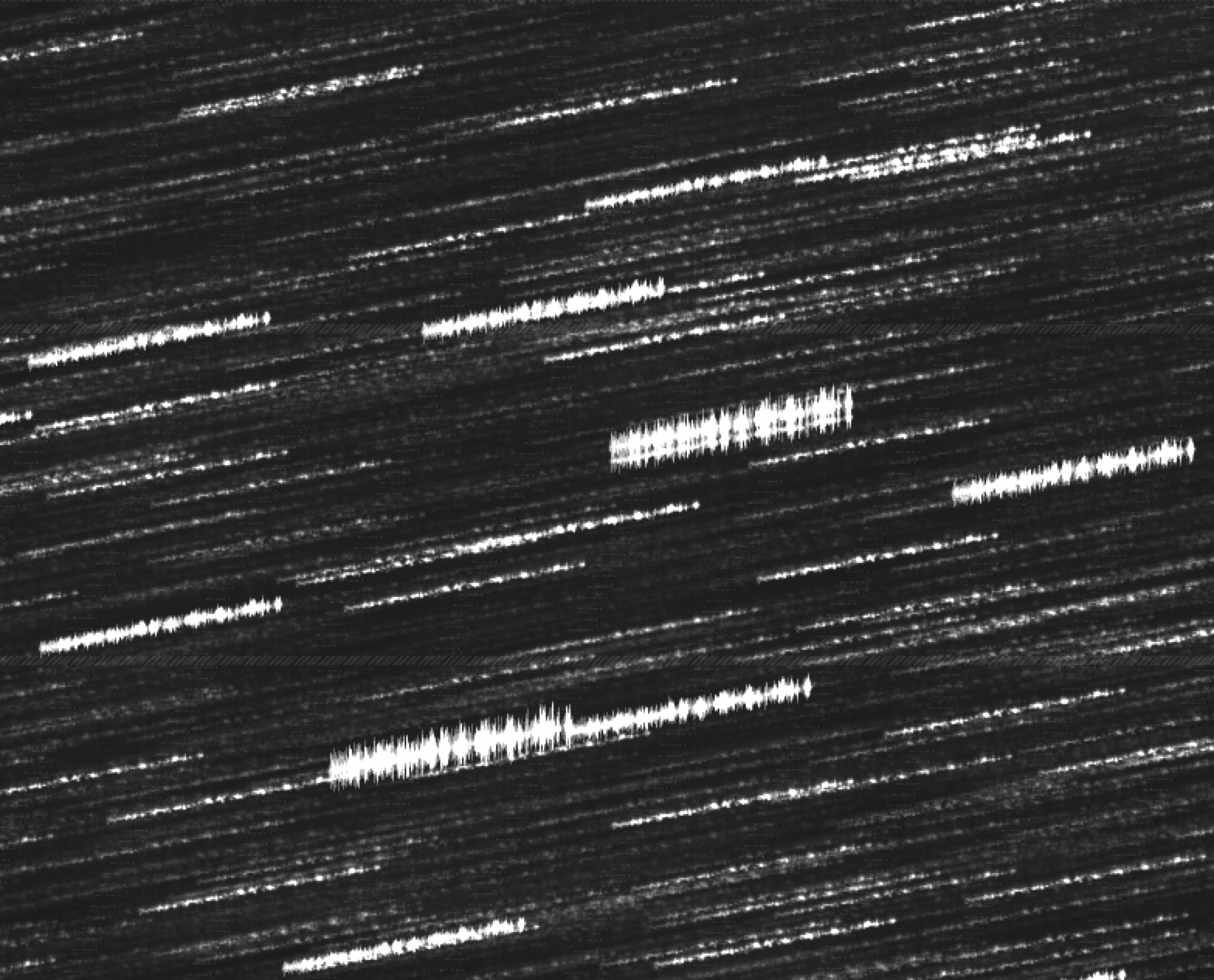The Kepler spacecraft recently executed a short pilot program to demonstrate the acquisition of unique calibration data using a new, experimental data collection mode that requires no extra fuel. On May 10-11, 2018, during the K2 Campaign 17 (C17) Deep Space Network (DSN) downlink, the spacecraft collected and downlinked five Full Frame Images (FFIs) after all C17 science data had been safely telemetered and spare DSN time remained.
In the data downlink attitude, the spacecraft antenna points towards Earth and the spacecraft rotates around the antenna boresight without using fuel. In this configuration the field of view drifts at ~0.3-0.5 arcseconds per second, i.e. more than during science observations. The resulting images are called Driftscan Full Frame Images (DFFIs). The data are expected to facilitate in-situ focal plane characterization and self-calibration, ultimately useful for scene modeling and Point Spread Function (PSF) photometry in crowded regions like star clusters or in extended objects.
Driftscanning produces long overlapping star-trails on the FFI, rather than conventional sharp point-sources. The star trails extend over ~150 ±20 pixels, corresponding to an average drift rate of ~0.35 arcseconds per second. The direction of pointing of the telescope was not known a-priori, but can in principle be derived from the distinct constellation pattern of star trails.
The driftscan FFIs were acquired with the same combined exposure time as conventional 30-minute Long Cadence FFIs, i.e. 270 onboard-coadded integrations with 6.02s exposure time and 0.52s readout time per integration. The DFFIs were collected within 16 minutes to 5 hours of the previous frame, such that star trails can be seen moving across module boundaries from frame-to-frame.
The star trail line segments possess substructure suggestive of non-constant image motion. A longer-than-average dwell time of a point source causes regions of "burn-in", while shorter-than-average dwell times cause relative dearths in flux. The resulting undulations appear in all the star trail line segments for a given driftscan FFI. The line segment substructures could also arise from the shutterless image array transfer process occurring in phase with constant image motion, yielding a "beating" phenomenon within pixel boundaries.
The driftscan FFIs may enhance flat-field calibration of the Kepler focal plane, since the relative response of adjacent pixels can be derived by identifying local departures from the expected star trail illumination pattern. Other uses for driftscan FFIs may eventually include solar system science and short-timescale (few seconds) variations of bright astrophysical sources.
The raw driftscan FFIs are now available from the MAST archive at https://archive.stsci.edu/pub/k2/ffi/driftscan-ffi. The file format is identical to conventional raw FFIs. These data should be considered experimental and will not be pipeline-calibrated.
The image below shows a portion of one channel of one driftscan FFI. Two presentations available online summarize the motivation for FFI driftscans, and preliminary FFI analysis.
